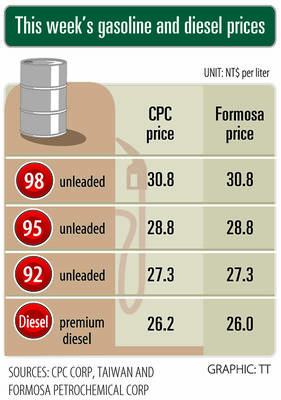The US dollar skidded below ¥100 and marked fresh lows against the euro on Friday as more US economic woes roiled the markets after news of an emergency loan to prop up Wall Street firm Bear Stearns.
The US currency also slid below parity with the Swiss franc for the first time ever as a tame inflation report boosted the odds for a hefty rate cut by the US Federal Reserve.
At 9pm GMT, the euro was at US$1.5669, up from US$1.5624 in New York on Thursday, but off the record US$1.5688 hit earlier on Friday.
The dollar was at ¥99.18, down from ¥100.60 to test 12-year lows, and 0.9978 Swiss francs compared with SF1.0102.
The pound was at US$2.0219 after US$2.0317.
News of a near-collapse at white-shoe Wall Street firm Bear Stearns "sent reverberations throughout all markets worldwide, not only because this is another `too big to fail' scenario, but also because it has strong implications for a domino effect in the already weakened financial services industry and beyond," said Sherry Cooper, chief economist at BMO Capital Markets.
The latest round of turmoil prompted EU leaders on Friday to call on the banks to help stabilize nerve-wracked financial markets as they also sounded the alarm about the euro's record-breaking gains.
"We would like to invite financial institutions to help reduce the instability on financial markets within their limits," Slovenian Prime Minister Janez Jansa told reporters after chairing a summit of EU leaders.
EU leaders said that sharp swings in exchange rates "are undesirable for economic growth" and that "in the present circumstances we are concerned about the excessive exchange rate move."
Dealers said that in late trading the dollar steadied slightly amid speculation that central banks might be considering intervention.
"The weakness of the dollar and its record-breaking lows may result in the first coordinated attempt in 13 years to strengthen the currency," Jordan Eburne at PNC Bank said.
"The dollar making new lows against the euro and 12-year lows against the yen has brought about complaints from ECB President [Jean-Claude] Trichet and Japanese Finance Minister Fukushiro Nukaga. The Group of Seven nations may feel the need to step in, just as they last did in 1995 when the dollar was trading at similar levels against the yen," Eburne said.
He said the weakness of the dollar "is already beginning to affect other markets, like the commodity markets, as investors lose confidence in US assets. However, an intervention isn't likely imminent just yet as the weak dollar is helping support America's economy via an increase in exports, and the strong euro has been needed to help contain inflation in Europe."

SETBACK: Apple’s India iPhone push has been disrupted after Foxconn recalled hundreds of Chinese engineers, amid Beijing’s attempts to curb tech transfers Apple Inc assembly partner Hon Hai Precision Industry Co (鴻海精密), also known internationally as Foxconn Technology Group (富士康科技集團), has recalled about 300 Chinese engineers from a factory in India, the latest setback for the iPhone maker’s push to rapidly expand in the country. The extraction of Chinese workers from the factory of Yuzhan Technology (India) Private Ltd, a Hon Hai component unit, in southern Tamil Nadu state, is the second such move in a few months. The company has started flying in Taiwanese engineers to replace staff leaving, people familiar with the matter said, asking not to be named, as the

The prices of gasoline and diesel at domestic fuel stations are to rise NT$0.1 and NT$0.4 per liter this week respectively, after international crude oil prices rose last week, CPC Corp, Taiwan (台灣中油) and Formosa Petrochemical Corp (台塑石化) announced yesterday. Effective today, gasoline prices at CPC and Formosa stations are to rise to NT$27.3, NT$28.8 and NT$30.8 per liter for 92, 95 and 98-octane unleaded gasoline respectively, the companies said in separate statements. The price of premium diesel is to rise to NT$26.2 per liter at CPC stations and NT$26 at Formosa pumps, they said. The announcements came after international crude oil prices

STABLE DEMAND: Delta supplies US clients in the aerospace, defense and machinery segments, and expects second-half sales to be similar to the first half Delta Electronics Inc (台達電) expects its US automation business to remain steady in the second half, with no signs of weakening client demand. With demand from US clients remaining solid, its performance in the second half is expected to be similar to that of the first half, Andy Liu (劉佳容), general manager of the company’s industrial automation business group, said on the sidelines of the Taiwan Automation Intelligence and Robot Show in Taipei on Wednesday. The company earlier reported that revenue from its automation business grew 7 percent year-on-year to NT$27.22 billion (US$889.98 million) in the first half, accounting for 11 percent

A German company is putting used electric vehicle batteries to new use by stacking them into fridge-size units that homes and businesses can use to store their excess solar and wind energy. This week, the company Voltfang — which means “catching volts” — opened its first industrial site in Aachen, Germany, near the Belgian and Dutch borders. With about 100 staff, Voltfang says it is the biggest facility of its kind in Europe in the budding sector of refurbishing lithium-ion batteries. Its CEO David Oudsandji hopes it would help Europe’s biggest economy ween itself off fossil fuels and increasingly rely on climate-friendly renewables. While